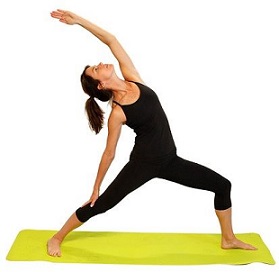Urinary incontinence can be very disruptive to a person’s everyday life. There are however many options available to help control this disorder. One such method is the use of exercise.
Ideal for sufferers who want to avoid taking medication, there are several exercises that can be undertaken to control the symptoms of incontinence. In this article, we share with you these beneficial exercises.
Identifying the right muscles
The pelvic floor muscles support and sustain the bladder. These muscles are located between your legs, running from the pubic bone to the base of the spine.
They help to hold up the bladder, and so when these muscles are weak, there is a higher risk of urinary leakage.
Before doing any sort of exercise, you need to identify which pelvic floor muscle you should work on. You can do this very easily:
1. Sit down on a chair and keep your knees apart.
Pretend that you are trying to stop wind escaping from the anus, which will require you to squeeze the muscle above the entrance of it. You should be able to feel some movement in the muscle.
2. Try stopping the flow of urine without using the leg, buttock or abdominal muscles.
If you are able to do this, then you know which muscle it is that you should be exercising.
Kegel exercises
These help in strengthening the pelvic floor muscles and are a very easy exercise which can be done anywhere. There are two types of Kegel exercises: slow and fast.
For the slow exercise:
1. Ensure that you have an empty bladder.
2. Tense the muscles (pretend that you are trying to stop the flow of urine) as hard as you can for 10 seconds but ensure that you breathe normally.
3. Now relax the muscles and rest for 10 seconds.
4. Repeat approximately 10 times.
For the fast exercise:
1. Again ensure that you have an empty bladder.
2. Tense the muscles as quickly as possible for 1 second.
3. Quickly let go.
4. Repeat 10 times.
Try and do these exercises approximately 3 times in a day. You can begin with the slow exercise and then work your way up to the faster exercise. Although it will take around 6 weeks for you to notice a difference, you will be able to strengthen the pelvic floor muscles.
Exercising is effective
Anyone can do these exercises, regardless of age and gender. They have been proven to be very effective. As they can be done quite discreetly, they minimize any disruption to your lifestyle and nobody has to know that you are doing them.

These exercises can also be combined with bladder training for the best results. You can speak to your doctor about this and hopefully come up with a routine.
However if the symptoms do persist, there are other things that you can use to help you control incontinence. One of the most popular options is using an intermittent catheter which is a device that is inserted into the bladder, to drain urine.
Due to them being available in many different shapes and sizes, they are a more suitable option for people with a busier lifestyle. A doctor can show you how to use the device and you can then begin to insert them on your own.
Remember that there are lots of options to treat urinary incontinence so whether it is stress related or an overactive bladder, you don’t need to suffer with it forever! As with anything health-related, if symptoms continue to persist, be sure to visit your doctor.







































